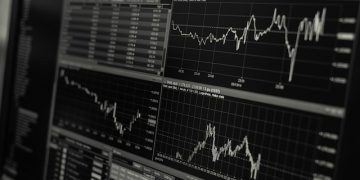NEW YORK (Reuters) – Yields on U.S. Treasuries are rising again, as expectations of an economic rebound pushed the 30-year yield above 2% on Monday for the first time since the pandemic began and the benchmark 10-year yield climbed to its highest level since early 2020. [US/]
Though they remain historically low, a rapid rise in yields can ripple through to other assets, affecting everything from financial stocks to the housing market.
Why are yields rising?
The Federal Reserve cut interest rates to near-zero levels in March to spur borrowing and kick the economy out of a pandemic-fueled recession. Yields across maturities hit record lows.
But in recent months, breakthroughs in the development of COVID-19 vaccines and expectations of more fiscal stimulus under a Democrat-led Congress have pushed some investors out of Treasuries and into comparatively riskier assets such as stocks. That lifted yields to their recent highs.
The yield on the 30-year Treasury bond overnight Monday rose to 2.006%, its highest since February 2020. The yield hit an all-time low of 0.702% in March last year as the coronavirus pandemic began to spread globally. By comparison, on the first trading day of 2020, the yield closed at 2.340%.
The yield on the benchmark 10-year Treasury note on Monday rose to 1.200%, its highest since March 2020. It was last trading at 1.164%.
Real yields, which account for inflation, have edged higher this year as well, though they still remain in negative territory. Those rising inflation expectations signal investor confidence in the economy.
Where do investors think yields will go next?
Investors generally believe yields will continue their upward move in 2021, though many think the Fed – which sees rapid jumps in yields as a threat to the recovery – would likely cap a rally that moves too quickly or shoots too high.
A Reuters poll of 60 analysts in December showed a median forecast of 1.2% for the 10-year Treasury yield over the next year.
Some investors are worried about the possibility of a so-called taper tantrum, in which yields rise sharply when the Fed begins winding down its stimulus earlier than expected. In addition to lifting yields higher, worries over an earlier-than-expected stimulus unwind in 2013 hit investor appetite here for corporate bonds and caused a sharp sell-off in stocks.
The Federal Reserve has gone out of its way to assure markets that no such shift is on the near-term horizon. At its January meeting, the Fed’s policymaking committee left its key overnight interest rate near zero and made no change to its monthly bond purchases. It pledged again to keep those economic pillars in place until there is a full rebound from the pandemic-triggered recession.
What does the rise in yields mean for other assets?
Higher Treasury yields have helped send the dollar up by approximately 1.45% against the euro this year. Higher yields make the currency more attractive to income-seeking investors. The dollar index, which weighs the currency against a basket of six rivals, was last trading 1.17% higher for the year.
The U.S. 10-year note now has a 160 basis-point yield advantage over its German counterpart, which is trading in negative territory, up from around 100 basis points in July.
The spot price for gold, which struggles to compete with income-producing assets when yields rise, is down 3.24% this year after outperforming nearly all other assets with last year’s gain of a little more than 22%.
While the stock market soared as bond yields hit historic lows last year, equities can conversely suffer here from higher yields, as bonds start to offer more competition to yield-seeking investors.
Rising yields have in recent weeks been a mixed bag for stocks. Shares of financial companies, which benefit from higher rates, are up 5.14% this year, using the S&P U.S. Financials index, outpacing the S&P 500 index, which is up 3.71% over the same period.
As the economy begins to return to normal, companies whose fortunes rise and fall with the market cycle benefit. Non-cyclical stocks, which are less attuned to market moves, like utilities, become less valuable. The S&P 500 utilities sector is underperforming the broader index, up 1.34% this year.
How could higher Treasury yields affect individuals?
The effects of higher yields beyond Corporate America can most directly be seen in the housing market. The interest rates charged on fixed-rate mortgages tend to shadow moves in Treasury yields and have already begun edging higher.
The average rate on a 30-year mortgage, using data from the Mortgage Bankers’ Association, has ticked higher since the start of the year, though it remains just 6 basis points off its record low. A Freddie Mac survey has also risen this year, by 8 basis points to 2.73%.
Reporting by Kate Duguid; Editing by Dan Grebler




